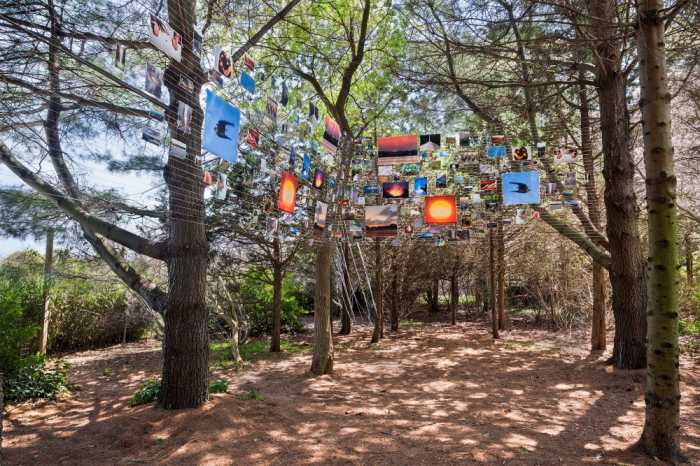A previous article detailed Delancey Floyd-Jones’ service in the Mexican War, the Native American battles and the Civil War, where he was promoted to Brigadier-General, having served with distinction in the Virginia Campaign and at Gettysburg. He remained in the Army at the end of the war and was given command  of several locations, ranging from Detroit, to Little Rock, to Idaho, to Holly Springs, Mississippi and Jackson Barracks and Louisiana. He served as Superintendent of Indian Affairs, as a Recruiter, an Inspector General and Judge Advocate, and was involved in putting down railroad disturbances in Pennsylvania. He seems to have become somebody who could be assigned to a variety of activities and perform them well. His military record indicates he “retired from active service upon his own application, March 20, 1879, having served over 30 years.”
of several locations, ranging from Detroit, to Little Rock, to Idaho, to Holly Springs, Mississippi and Jackson Barracks and Louisiana. He served as Superintendent of Indian Affairs, as a Recruiter, an Inspector General and Judge Advocate, and was involved in putting down railroad disturbances in Pennsylvania. He seems to have become somebody who could be assigned to a variety of activities and perform them well. His military record indicates he “retired from active service upon his own application, March 20, 1879, having served over 30 years.”
In the years after the Civil War’s end, Floyd-Jones traveled extensively throughout the world, using his service time to take extended leaves of absence. The Queensborough Public Library’s Archives have several scrapbooks containing letters he sent back to Long Island, most to his sister Kate (Josephine Katherine, 1832–1905) and articles he wrote for local newspapers. He recorded his first trip, to several European cities and to Tangiers, from March to November 1868. A second trip, from June 1875 until February 1876, found him in Europe as well as in Egypt. In this instance, he sent back dispatches to the Hempstead Inquirer, using the name “Au Revoir.” After he left the Army, he traveled throughout Europe in 1881 and 1882.
His most extensive trip was an around the world voyage from October 1885 until June 1886. He traveled through Europe, Egypt, India, China and Japan and ended his narrative in San Francisco, detailing his experiences in letters to Amityville’s South Side Signal. He wrote these letters under the name “Unqua,” which he described as his “Country Place in Oyster Bay.” This was the home of his brother Edward Floyd-Jones, located on Merrick Road across from today’s Burns Park.
Floyd-Jones collected and edited these letters and published them in 1887 as Letters from the Far East, detailing his experiences that took far longer than those described by Jules Verne in Around the World in Eighty Days (published in 1873 and referenced by Floyd-Jones). He traveled first class on the newest ships, stayed at the best hotels, ate at officers’ clubs or at restaurants recommended by local officials, visited with Americans living in European and Asian cities, toured famous sites such as the Pyramids, the Taj Mahal and the Yangtze River and wrote positive reviews of his experiences. The book provides pleasant and enjoyable reading and was generally well-received when published, except for a negative review printed by the Washington Post on June 26, 1887: “The narrative is very plain and exceedingly matter of fact. Col. Jones evidently traveled for enjoyment, and not for study or observation. The book has no special merit.”
Colonel Floyd-Jones traveled alone, despite the fact he had married Minnie Oglesby in 1878. They had apparently lived separately for many years. His first wife, Laura Whitney died in September 1852, three months after they were married. He had no children, and there is no record he ever built or owned an estate, as did most of his family members. He appears to have lived at the Union Club in New York City and to have stayed with his brother Edward at Unqua during the warm weather. His name, however, remains on the library he created to serve the residents living along the south shore.
In 1896, Floyd-Jones convinced Coleman Williams, his cousin, to donate a small parcel east of Grace Church, on which he built a one-room library. The building cost $1,500 and was heated by a fireplace in the middle. There is no record that the library was lit by electricity when it was built, but that was certainly added in the early 20th century. His relatives donated a table, chairs and bookcases, all of which are still in use. They also donated books and paid for the services of a librarian. The library was open to the public five days each week, with an interesting twist. Any patron could buy a key for $10, which allowed entry to the building any time, for taking out or returning books, for reading, or for meeting with friends and other patrons. One of the original keys is still on display in the library, which stands on its original site on Merrick Road across from Cedar Shore Drive.
The Delancey Floyd-Jones Library became exceedingly popular, first among family members, and then with people who settled the area in the late 19th century and early 20th century. Its namesake doubtlessly took great satisfaction from this, but it was short-lived. He died in New York City from pneumonia on Jan. 19, 1902, one day before his 76th birthday. He was buried in the Floyd-Jones family plot behind Old Grace Church, leaving a legacy of extensive military service and a library that endures to this day.
George Kirchmann is a trustee of the Historical Society of the Massapequas. His email address is gvkirch@optonline.net.



































